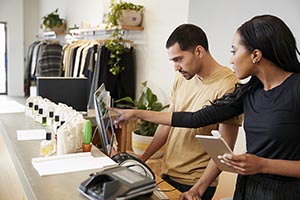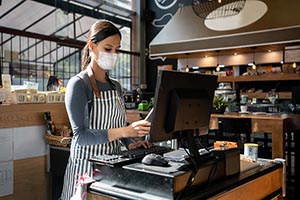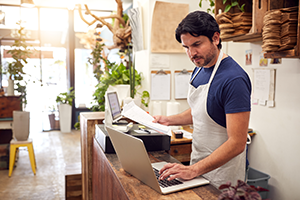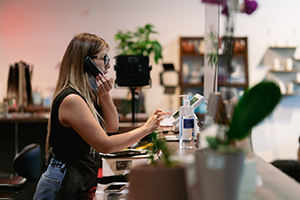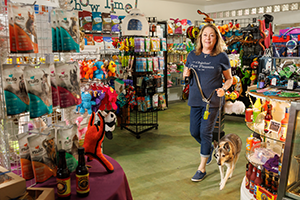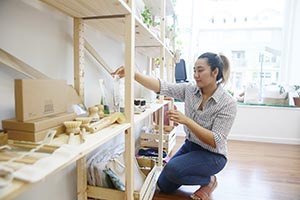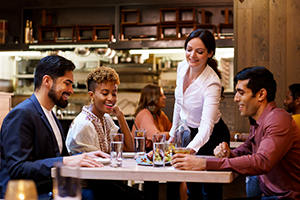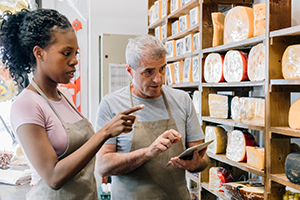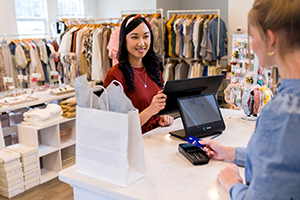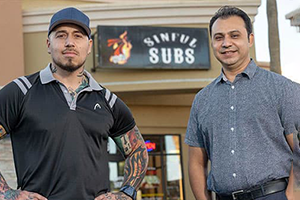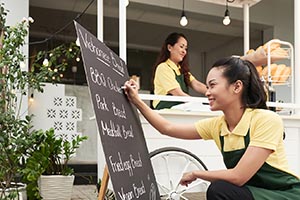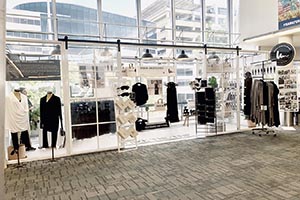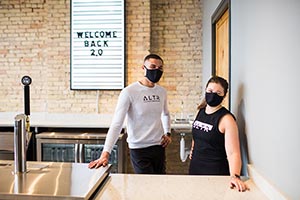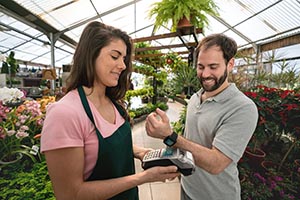Sit-down restaurants are no longer the only option for dining. Here, we explore four service models that veer from the traditional brick-and-mortar store and explore what benefits they can deliver.
The recent turbulence in the food and beverage industry (largely due to the combination of a technology boom followed by a global pandemic) has forced many restaurant owners to explore alternative service models. Here, we dive into some of the creative ways business owners are adapting to today’s ever-changing restaurant landscape.
Ghost kitchens
Also known as virtual kitchens, cloud kitchens or delivery-only restaurants, ghost kitchens are a fast-growing restaurant model. In fact, ghost kitchens are estimated to be a $1 trillion market by 2030. So, what are they?
Never mind their spooky name—ghost kitchens are a simple concept. Instead of using a traditional brick-and-mortar store, they operate out of a private cooking facility with no dine-in areas. Delivery drivers from third-party apps like Doordash and Grubhub take the food where it needs to go, and the customer never sets foot in the store.
Facilities range from shared or rented kitchens, to extra spaces in existing restaurants, and even containers that have been outfitted with kitchen equipment.
Because all orders are done digitally, there’s less room for error and all the information your employees need is always in one place. It can also help cut costs. You generally won’t be tied to a long-term lease, most kitchens come equipped with the necessary tools and there’s no need for front-of-house (FOH) staff.
Pop-up restaurants
Like ghost kitchens, pop-up restaurants don’t have a permanent physical location. As the name implies, these restaurants “pop up” in unexpected places for a limited time—sometimes hours, sometimes months. Many restaurant owners collaborate with other businesses and use their space to host a pop-up; others may set up shop in a more untraditional location like a city rooftop.
Even if you own a brick-and-mortar business, a pop-up can still be lucrative. Pop-ups are a low-risk opportunity to test out new concepts and locations for your business. Think of it as a trial run—you can get an idea of foot traffic at a certain location or serve up a creative food concept and decide whether it should stay on your menu.
Food trucks
Perhaps one of the most well-known (and well-loved) alternative restaurant models is the food truck. They’re essentially kitchens on wheels, and customers can walk right up to a window to place orders.
With safety and hygiene front of mind due to the COVID-19 pandemic, the food truck model offers a safer solution for both employees and customers. Food truck staff have less contact with customers than those at a traditional restaurant, and patrons can maintain social distancing as they’re waiting for their food.
An added benefit of food trucks is that startup costs are generally lower than typical restaurants—plus they’re cheaper to maintain. Having a restaurant on wheels is more than just a novelty for customers; it’s also an advantage for owners as you can move the truck to where the money is.
Food truck owners can also take advantage of social media advertising, just like pop-up restaurants do, engaging with customers, generating buzz and letting fans know where to find their truck.
For on-the-go models like pop-ups and food trucks, a cloud-based POS (point of sale) is key. Not only does a modern POS allow you to securely take payments from your mobile device, but it also keeps your business connected through easily accessible customer and inventory data, no matter where you are.
Food halls
Before the pandemic, food halls were one of the fastest-growing trends in the food and beverage industry; and no, we’re not talking about your run-of-the-mill mall food court. Food halls are designed to be a destination experience.
Food hall vendors can rent out space among other restaurant owners, getting started with low overhead costs. The average startup cost for a stand-alone restaurant ranges from $250,000–$2 million, but the initial cost of a food hall stall ranges from $25,000–$75,000. That means profit margins are also significantly higher (15%–20% compared to 10% in traditional restaurants).
The short-term leases in food halls give way to more creative, experimental food concepts and offer customers a wide variety of culinary options all in one place. That means customers get a novel experience whether it’s their first time visiting or their tenth. It’s a concept that fosters a keen sense of community, plus it makes for prime real estate as the other food vendors in the building attract potential customers for your business.
Food halls are also relatively pandemic-friendly as the spaces are generally large, leaving plenty of room for customers to social distance. Plus, housing multiple vendors means a sudden vacancy won’t cause the whole business to go under.
Regardless of what model of restaurant you’re dreaming of, a modern POS solution can help






